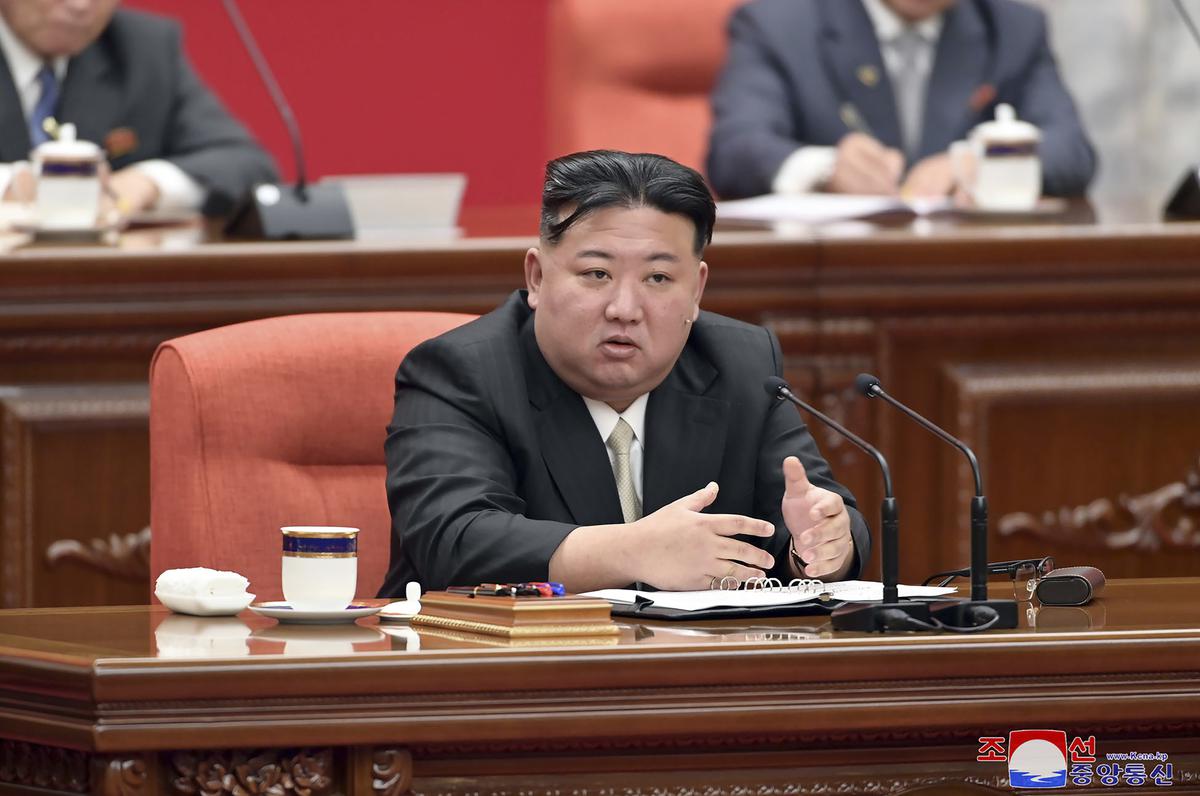North Korea to launch 3 more spy satellites and build more nuclear weapons in 2024

North Korean leader Kim Jong Un said his country will launch three additional military spy satellites, build more nuclear weapons and introduce modern unmanned combat equipment in 2024, as he called for “overwhelming” war readiness to cope with U.S.-led confrontational moves, state media reported Sunday.
Kim’s comments, made during a key ruling Workers’ Party meeting to set state goals for next year, suggest he’ll continue a run of weapons tests to expand his arsenal amid long-dormant diplomacy with the United States. Observers say Kim would ultimately hope to use his boosted nuclear capability to wrest greater outside concessions if diplomacy resumes, likely after the U.S. presidential elections in November next year.
During the five-day meeting that ended Saturday, Kim said moves by the United States and its followers against North Korea have been unprecedented this year, pushing the Korean Peninsula to the brink of a nuclear war, according to the official Korean Central News Agency.
“The grave situation requires us to accelerate works to acquire overwhelming war response capabilities and thorough and perfect military readiness to suppress any types of provocations by the enemies at a stroke,” Kim said, according to KCNA.
Kim set forth plans to fire three more military spy satellites next year in addition to the country’s first reconnaissance satellite launched in November. He also ordered authorities to press ahead with work to manufacture more nuclear weapons and develop various types of modern unmanned combat equipment such as armed drones and powerful electronic warfare devices, KCNA said.
Kim has been focusing on modernizing his nuclear and missile arsenals since his high-stakes nuclear diplomacy with then-President Donald Trump broke down in 2019 due to wrangling over international sanctions on the North. Since last year, Kim’s military has test-fired more than 100 ballistic missiles, many of them nuclear-capable weapons targeting the mainland U.S. and South Korea, in violation of U.N. bans.
The United States and South Korea responded by expanding their military exercises and deploying U.S. strategic assets such as bombers, aircraft carriers and a nuclear-armored submarine. North Korea calls the moves U.S-.led invasion rehearsals.
South Korea’s spy agency said last week that North Korea will likely launch military provocations and cyberattacks ahead of South Korean parliamentary elections in April and the U.S. presidential election in November.
“Pyongyang might be waiting out the U.S. presidential election to see what its provocations can buy it with the next administration,” said Leif-Eric Easley, a professor at Ewha University in Seoul.
In the face of deepening confrontations with the U.S. and its partners, North Korea has sought to beef up its cooperation with Russia and China. The U.S. and South Korea accuse North Korea of supplying conventional arms like artillery and ammunition to Russia in return for high-tech Russian technologies to boost its own military programs.
Julianne Smith, U.S. permanent representative to NATO, said earlier this month the U.S. assessed that the suspected Russian technologies North Korea seeks are related to fighter aircraft, surface-to-air missiles, armored vehicles, ballistic missile production equipment or materials of that kind. Smith said U.S. intelligence indicates that North Korea has provided Russia with more than 1,000 containers of military equipment and munitions.
South Korean officials said Russian support likely enabled North Korea to put its spy satellite into orbit for the first time on Nov. 21. Many foreign experts are skeptical about the satellite’s ability to take militarily meaningful high-resolution images. But South Korean Defense Minister Shin Wonsik said in November that Russia could help North Korea produce higher-resolution satellite photos.



